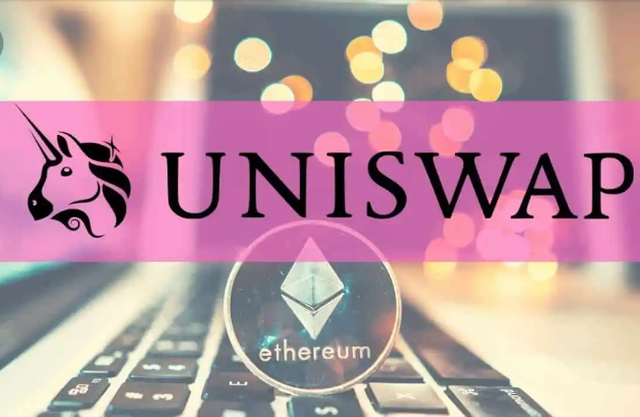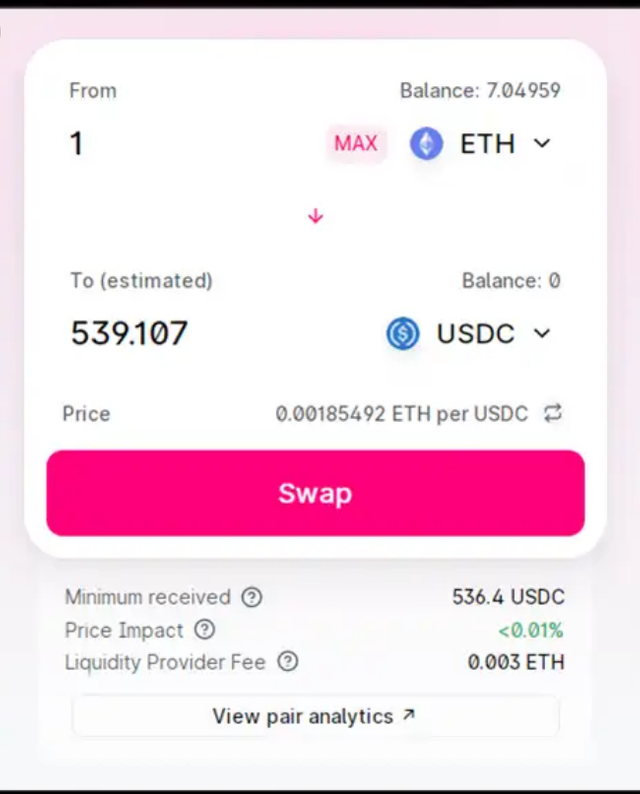STEEM CRYPTO ACADEMY WEEK 4 HOMEWORK POST FOR @gbenga ; THE ETHEREUM UNISWAP PROJECT
Thank you professor @gbenga for the lectures. For the homework, I have chosen to write about the Uniswap project built on the Ethereum blockchain. Please join me.
INTRODUCTION
Unlike most centralized exchange platforms which are governed by a single authority (the company that operates the exchange), and require users to place funds under their control and use a traditional order book system to facilitate trading, Uniswap is a decentralized exchange protocol built on Ethereum.
Uniswap is a completely different type of exchange that‘s fully decentralized – meaning it isn’t owned and operated by a single entity – and uses a relatively new type of trading model called an automated liquidity protocol.
The Uniswap platform of 2018 was built on the Ethereum blockchain, the world’s second-largest cryptocurrency project by market capitalization, which makes it compatible with all ERC-20 tokens and infrastructure such as wallet services like MetaMask and MyEtherWallet.
Uniswap being a decentralized exchange (DEX), enable users to maintain control of their funds at all times as opposed to a centralized exchange where users have to give up control of their private keys to the exchange. By retaining control of private keys, the risk of losing assets if the exchange is ever hacked is being eliminated.
HOW UNISWAP WORKS
The “Exchange” contract and a “Factory” contract are the two smart contracts which runs on Uniswap. These are automatic computer programs that are designed to perform specific functions when certain conditions are met.
However, the factory smart contract is used to add new tokens to the platform and the exchange contract facilitates all token swaps, or “trades”.
This means that any ERC20-based token can be swapped with another on the updated Uniswap platform.
AUTOMATED LIQUIDITY PROTOCOL
Uniswap solves liquidity problem which exist in centralized exchanges through an automated liquidity protocol. Uniswap users pool their money together to create a fund that’s used to execute all trades that take place on the platform. For every token that is listed, there is a pool that users can contribute to, and the prices for each token are worked out mathematically using algorithm.
With this in place, a buyer or seller does not have to wait for an opposite party to appear to complete a trade. Rather, trade can be executed at a known price once there is enough liquidity to facilitate such trade in that particular pool.
Each liquidity pool receives a token as a percentage of their contribution to the pool. This token can be redeemed for a share of the trading fees.
The 0.30% trading fee charged on Uniswap platform is being sent to a liquidity reserve. However, after the uniswap v.2 upgrade, a new protocol fee was introduced where 0.05% of the trading fee is being sent to a Uniswap fund to finance future developments. This feature was currently turned off
ARBITRAGE TRADING
Arbitrage traders are an essential component of the Uniswap ecosystem. What these do is to find price imbalances across multiple exchanges and use them to generate profit. For instance, if BTC price on poloniex is $45,500 and 45,450 on Binance, it is clear that buying a large volume of BTC on Binance and selling on poloniex would generate profit at a relatively low risk.
Similarly, arbitrage traders on Uniswap find tokens that are trading above or below their average market price which as a result of large trades create imbalances in the pool either by lowering or raising the price – and buy or sell them accordingly. They do this until the price of the token rebalances in line with the price on other exchanges and there is no more profit to be made.
UNISWAP'S UNI TOKEN
The UNI token originally created in September 2020 came in an effort to prevent users from defecting to rival DEX SushiSwap. One month before UNI tokens launched, SushiSwap – a fork of Uniswap – had incentivized users from Uniswap to allow SushiSwap to reallocate their funds to the new platform by rewarding them with SUSHI tokens. This was a new type of token that gave users governance rights over the new protocol as well as a proportionate amount of all transaction fees paid to the platform.
Uniswaps native token, UNI, is known as a governance token. This gives holders the right to vote on new developments and changes to the platform, including how minted tokens should be distributed to the community and developers as well as any changes to fee structures.
HOW TO USE UNISWAP
Uniswap is known to be an open-source protocol that anyone could create their own frontend application for it. The most commonly used one is https://app.uniswap.org or https://uniswap.exchange.
To get started, here are the steps to follow;
Go to the Uniswap interface.
Connect your wallet. You can use MetaMask, Trust Wallet, or any other supported Ethereum wallet.
Select the token you’d like to exchange from.
Select the token you’d like to exchange to.
Click on Swap.
Preview the transaction in the pop-up window.
Confirm the transaction request in your wallet.
Wait for the transaction to be confirmed on the Ethereum blockchain. You can monitor its status on https://etherscan.io/.
Thank you so much for reading through.. I really appreciate! Special regards to @steemitblog @steemcurator01 @steemcurator02 @gbenga



Hello, Copy-pasting isn't allowed here, you should work on getting your post original. Original content is good for yourself, the community, and Steemit.
Evidence
Original article